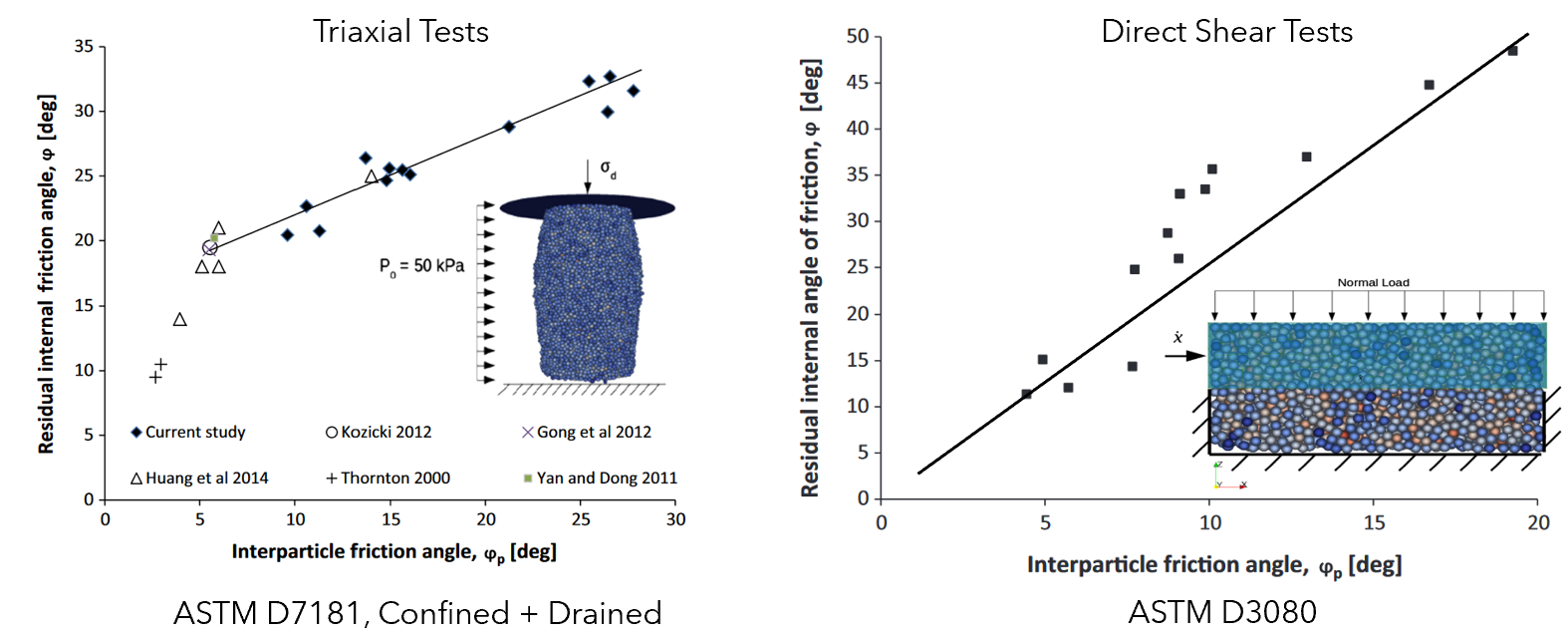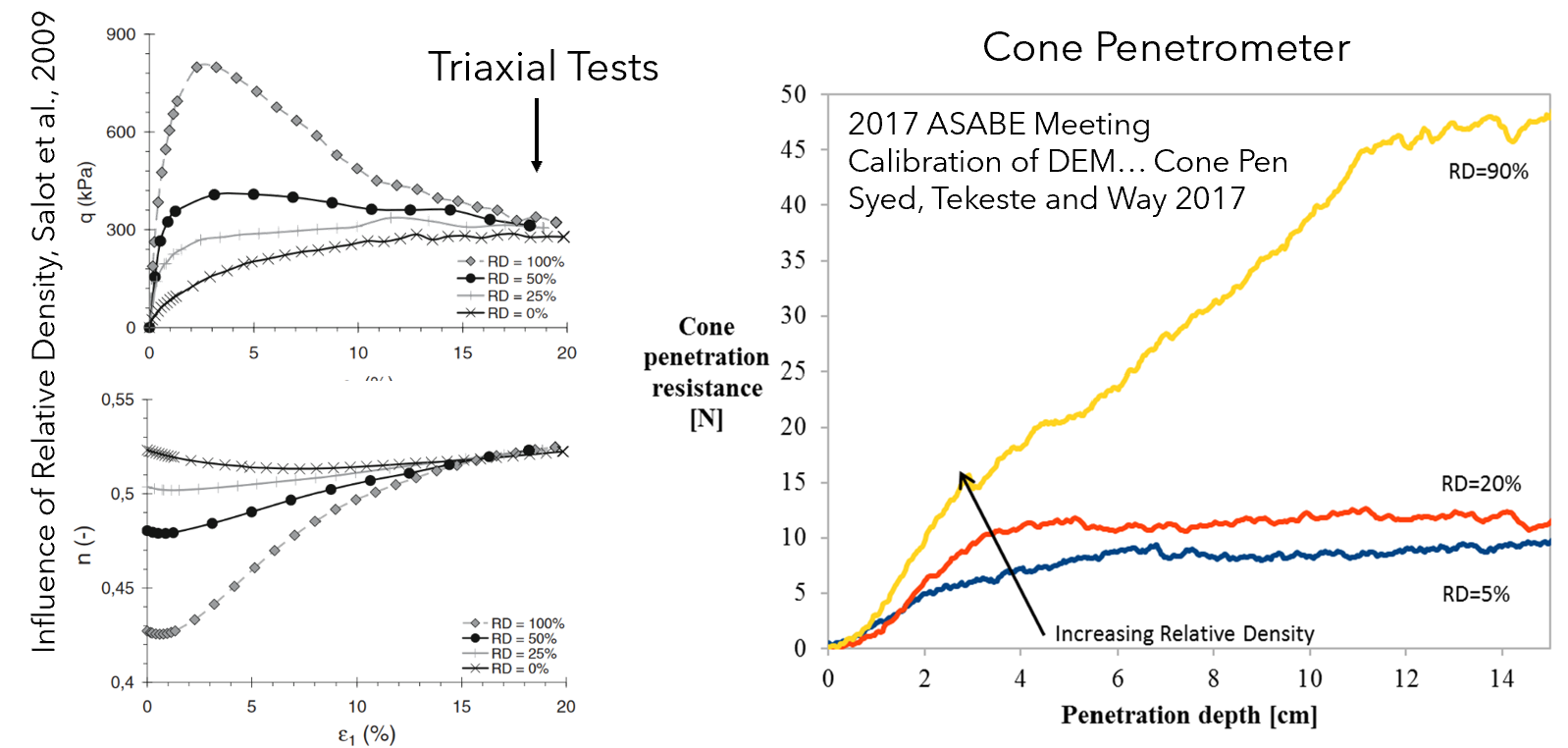Discrete Element Method Calibration Methodology
Calibration of DEM parameters for simulation of dense granular systems, such as soils, powder, or grain is time consuming and frequently suboptimal. We provide calibrated initial state files for DEM simulation performed on any platform (LIGGGHTS, Chrono, EDEM, PFC, LS-Dyna).
Mechanical Behavior of Soils and Granular Material
We calibrate DEM parameters using our own data and methods that we have published as well as foundational work performed by early researchers in DEM calibration. The figure below shows correlations between interparticle friction and internal angle of friction in conditions of typical geotechnical tests. These are core results that form the basis of any DEM calibration.

Furthermore, the porosity of the virtual DEM specimen affects strength just as it would in a physical granular soil. The figures below show the isolated effects of realtive density in triaxial test and ASABE cone penetrometers conditions.

Our DEM calibration method can arrive at a DEM parameter set in 2-3 iterations.
Tool and Mobility System Wear
We also provide calibration of Finnie and Archard wear coefficients for use in DEM simulation. We perform free column testing between target granular and tool materials (conceptual figure shown below, from Stevick et al., 1980). A digital DEM twin of the test is also developed to verify the wear coefficients.

Below is an example of wear prediction on a chisel cutting through frozen sand. At an operational frequency of 3.75Hz, the chisel life was estimated at 1700 hours.
